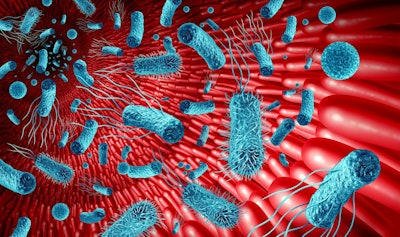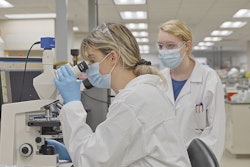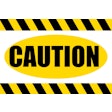
Kemin’s Cody Swan and Marc Hoopingarner discuss gut health, feed additives and more.
Animal nutrition trends, challenges and opportunities [PODCAST] (21:41)
Ann Reus: Hello and welcome to the Feed Strategy podcast. I’m your host, Feed Strategy senior reporter Ann Reus.
Cody Swan is the commercial director for Kemin’s U.S. beef, dairy and equine business, and Marc Hoopingarner is commercial director for Kemin’s U.S. swine and poultry business. I recently spoke with both of them about trends, challenges and opportunities in the animal nutrition industry as well as gut health and how feed additives and other tools can promote good gut health in livestock and poultry. Here’s our conversation.
Cody, what are some trends in animal nutrition that you expect to see throughout 2023?
Cody Swan: So this is Cody, and from a Kemin standpoint, this is a question that we review often. And we’ve really trended this direction over the past few years. And I don’t think it’s really, really changed moving into 2023. And one of our largest focuses is a continued focus on gut health. And that seems to be a buzz term in the industry. We at Kemin treat it a little bit differently, and not just gut health as a broad term, but we like to dive a little bit deeper, and what does that actually mean in the animal. But overall, a critical contributor to the overall health, performance and welfare of the animals.
I don’t think it comes as any surprise as a continued effort to sustainability and the focus by different companies up and down the entire value chain, from animal feed to consumer packaging, that sustainability will continue to be a focus. We have some concerted efforts going on with that currently, within Kemin. And just the volatility with the markets in general, in the industry, over the past two to three years is getting the most out of out of the diets, that we feed the animals, and there’s certainly a lot that goes into that. But Kemin is just a piece of that entire chain and how producers can utilize additives and technologies to ensure optimal use and making sure we’re educating the producer and consumer the best way we can in order to make smart decisions to improve the performance and health and profitability of producers.
Reus: Mark, are you watching any other different trends this year?
Marc Hoopingarner: You know, I think Cody captured it very well. The needle on gut health has yet to be really defined and I think that, as industries, we are always trying to really dial that in more. One of the things that I think is really the big question is what value proposition can we take to our customers? And then how do they then bring that down the chain to their customers? Because a lot of this is consumer driven. We want to make sure that not only are our customers educated but their customers are educated on exactly what value they’re doing to provide in the protein industry.
Reus: And Mark, carrying on that, what challenges and opportunities will the feed and animal nutrition industries face in the near term?
Hoopingarner: Well, if history has been a teacher for us, the last few years, it’s been kind of a moving target in terms of volatility. If we looked at where we were at this time last year, the markets were in a very tough spot across most of the protein industries. A lot of that was labor driven. Where we’re at right now, you’re looking at market volatility. I know that the chicken market right now specifically, they’re in a tough period. Even on the pork side, I think that they’re having a little bit different experience, and the turkey business as well. So it’s very difficult to talk about challenges without looking at just inflation. So, looking at the impact that inflation has in overall rising input costs, I think it’s really challenged our customers to take a hard look at exactly what they’re doing in terms of how they’re impacting their overall profitability. And looking at how, with the feed additive business is such a broad business now, what are companies like Kemin, how are they bringing value to their customers, when you’re looking at market volatility, inflation, rising input costs, labor shortages and an ever-changing regulatory market, I think that it’s very difficult to pinpoint one or two things that have a big challenge. I’d say it’s just a potpourri of all of all these things mixed together and it presents companies like Kemin, and even to a larger extent, to the industry, what are we doing that is going to help our customers in the very end to become profitable, not only profitable, but are continuing to provide the most safest and most economical protein in the United States – and the world, to that extent.
Reus: Cody, are you seeing any unique challenges and opportunities in the cattle industries, or do these all kind of carry over all the industries?
Swan: Yeah, good question, Ann. I think Mark put up a big enough umbrella there to capture really the main pieces throughout all industries and through all species. Just an example, from the cattle side that that alludes to Mark’s points is 2023 looks to be a start of a great year, in terms of the markets for cattle with beef demand remaining relatively steady and cattle supplies tightening over the course of 2022. And so that that means good things for the markets from that standpoint. What Mark had touched on was just really the input costs and the inflationary reasons that maybe there’s more volatility outside of what we’re putting in to these operations than there has been before, but also knowing that we can expect a pretty good return on our investments here in the coming year, as well.
So it’s very consistent throughout industries, I think the biggest thing from a Kemin standpoint, when we look at what is our opportunity in that, and I alluded to it before, is just the education piece of it. And people have so much information at their fingertips now, and we can certainly play an integral piece in that and educating the producer or consumer. And there’s such a thirst for knowledge, I think more so. You know, if you date back 10 or 20 years, obviously, that landscape looks a lot different. But typically, our customers and the end user consumer is more educated today now than they were then. But we can use our areas of expertise and what our focus and where our knowledge lies, and continue that education with those folks in order to, again, make more conscientious decisions, and really work towards doing this in partnership with them so we can better serve the industry.
Reus: Cody, do you see any of the recent challenges such as feed costs, ingredient availability and supply chain easing in the coming year?
Swan: I do. I think we’ve already seen seeing a little bit of easing amongst the categories that you just mentioned. When I when I talk about, as we did, back 10 or 20 years, and you fast-forward to today, we’re in an increasingly global market as opposed to just thinking about the U.S. or North America. I think what the last couple years have done is certainly uncovered some pain points and maybe uncovered the root causes of some of those pain points, and probably made us smarter in terms of the things that we need to address as opposed to just addressing the symptoms. And that’s obviously easier said than done, because some of those issues take time to rectify, but as we’ve kind of felt the ripples of COVID and in some of those economic uncertainties, I think there’s signs that we’re working ourselves out of that. But I think in terms of the industry kind of getting used to that new norm, whatever that is, will still take a little bit of time to experience that.
Reus: Mark, you and Cody both mentioned gut health as a big trend that you’re following, and it’s certainly gained popularity in recent years. How does gut health affect an animal or a bird’s overall health and productivity, and why is it so important?
Hoopingarner: I mean, gut health equals animal health. There’s so many different factors that go into gut health and why it becomes important, just to not the animal’s but the bird’s overall health and productivity. If you look at the list of priorities for our customers, No. 1 is animal welfare. That’s a really big part of what our customers and their focus is, is to make sure, No. 1, they’re taking care of their animals, their birds, and the role that gut health plays. It’s just looking at the microbial balance, intestinal integrity and the immune function. Those are all key components to everything that rolls up into gut health. I think the opportunity that we’ve had is create a dialogue with our customers just to understand fully what their what their definition of gut health is. How do they see gut health and the impacts with their animals and their birds, and then what can Kemin do based on this knowledge to continue to innovate and bring new solutions to them? Before, it was more like the Wild West; now we’re starting to zero in a little bit more on understanding some of these broad concepts. And I think that Cody’s got a really good story that he can tell about the equine business and that’s just a good example of one of the ways that Kemin’s been able to bring their knowledge of gut health and apply it to a specific industry.
Swan: Yeah, to Mark’s point, in 2017, Kemin started the equine business. And really the objective of that was to translate some of the successes in any improvement in animal health and performance from typically what we’ve learned on the livestock and production side, and trend a little bit more towards the equine side, and specialty side – a little more hobby, as you think of it. So, we started that business in 2017 and one of the things we learned throughout all of that, and that we’ve since transposed, you know, it kind of comes full circle, that we’ve transposed back into the livestock/production side is how we speak, and how we speak to the consumer in making sure that the way we speak to our customer, certainly on the equine side, that it’s a little bit different mentality, and that our customers can reiterate those same points of the importance of what we have to offer from an intestinal health standpoint and what it means to the animal, that we had a great opportunity to do that. And that’s really where the education piece began in terms of gut health is, is us being able to talk to our customer, and then being able to relay that same message to a horse owner who may not necessarily may not have the education or experience or knowledge base as some of those folks that are making those decisions to formulate those needs, etc. And so we played an integral part in that.
And that really started from what I had mentioned prior was, was treating gut health as a, yes, it’s a broad term, but diving deeper about what are the aspects of gut health that matter? And what are the different pieces of it when Mark talks about really the microbial balance and the intestinal integrity and immune function and the part that we play in that and how we can educate on why that’s important on why gut health equals animal health.
A good example now in how we’ve transposed that is in the cattle industry, I think typically in the past, they’ve been used to discussing rumen health, and I think they thought 10 years ago that that was an all-encompassing term, that meant really anything that went on inside of the cow. And I think we’ve learned over the course of, especially the last few years, is that intestinal health and rumen health are two different things and they’re two distinct things. Again, offering us the opportunity to help educate our customers and producers on what that means and the impact that can have in the industry as a whole, but then, to their operation specifically.
Reus: And, Mark, on that point of education, do you see your clients drawing the line between gut health and animal welfare, or do they still kind of think that a healthy bird is a productive bird, but they don’t really look at the welfare side of it?
Hoopingarner: Well, I think it’s difficult to draw a line when you’re when you’re talking to animal welfare, gut health. I think it’s more about the overall welfare of the bird, or the animal. And when you when you talk with these customers, they really are focused, hyper focused, on welfare being probably the most important aspect of everything that they do. Not only do they want to produce a high-quality product, but they want to do it in the most safe and effective way that they can. And I’d go back to a little bit of what Cody was talking about: Kemin has been very intentional about trying to not only build upon this gut health platform that we’ve developed, but also provide that education piece and I’d say for the last four years, as a result, Kemin has done an intestinal health symposium that we provide as an educational opportunity that has been global that’s brought together a lot of different gut health experts in the swine, poultry, beef, dairy and equine industries. And, and I’d say it’s been a very nice launching pad for us to take our understanding as a global company and coalesce together with our customers to try to build upon how we can tie gut health with animal welfare, and then how it affects every other part of the value chain to our customers and to their customers in the end.
Reus: What types of feed additives can promote gut health and how do they work?
Swan: So again, as we mentioned, we look at it from a comprehensive approach. No one additive is going to be a silver bullet and we understand that, and I think over time that the industry has understood that as well, that you that you really have to focus on certain areas. And that’s really what Kemin’s strategy is, as we obviously, go to market, but also, as we innovate, that we go through those certain criteria.
And so first, as we talked about before, when we talked about those different those three areas of gut health, and we term it “clean up, build up and knock out,” and which are those areas that address microbial balance, the integrity of the intestine and immune function. Those are the three real areas that we’re looking at. And so you can look at a number of different additives, but really, what we’re talking about is, what can we clean up? So, from a water, disinfectant, feed standpoint, can we clean those up before they even get to the animal, or stabilize those? The second piece of it is build up. So how can we build up the integrity of the intestine in the animal? So a lot of times over the past few years, folks have probably seen the terminology around leaky gut. And really, that’s the term that we’re trying to address when we talk about the integrity of the intestine and making sure that’s operating at its at its optimum. And then the last piece is the immune function. When you talk about an animal getting sick or, or being compromised, that causes a huge glucose sink in the animal. And so any way that we can improve that immune system by clearing more glucose, that we have the ability to do that as well with one of our products. And then we also have the ability to knock out the harmful pathogens that are in the animal as well. And, and so then we’re talking about some of our active microbials, to be able to do that. Mark can expand on those.
Hoopingarner: Yeah, Cody, I think captured it really well. There’s so much information out there right now, because there’s a lot of companies that are bringing different feed additives to the table and it’s been a challenge for our customers with this information overload with all the all the new ingredients that are flooding the market. And I think what Kemin has done over the last couple of years is to try to build a program approach that we can simplify, if you say, how we provide our products, and the impact that our products are going to provide to the animals. It’s not, like Cody said before, there’s not just one product that’s going to help. I mean, historically, a lot of the tools that our customers have used, they’ve gone away, and we’ve had to become very innovative in our approach on how we treat animals and a lot of it is preventative, at this point. And, and so I look at, just trying to give our customers the most educated opportunity that they can implement a program without clouding up to too much with all the information overload that’s out there. So, like I said, it’s not necessarily a simplification, more of a zeroing in on what we can do specifically with our products and the value they provide to their animals.
Reus: Well, Mark, at the risk of that information overload, do you have any other things can be done on-farm to promote good gut health besides just additives and these other things that you have already discussed?
Hoopingarner: Sure. One of the things that I think that we can help to do is just understanding the interconnectivity of stress and gut health. How do they tie together? Where is that impacted on the farm? What can we do as a feed additive company to help to educate our customers about taking the measures to reduce those, and manage the stress at those known intervals? Be it weaning, transportation, diet changes, what effect do our products have in these certain periods of stress? And finally, I’d say just working with our customers, No. 1 to better understand their operations so we can we can continue to have a dialogue on how Kemin can create continually to develop innovations that will help impact on farm and, and then down ultimately at the consumer level.
Reus: Alright, Cody, anything to add there?
Swan: No, the only thing I would add is, Kemin is just certainly a piece of that whole chain of getting an animal from farm to fork, so to speak, and what is the best way to do that. And we’re just one piece of that puzzle and there’s a lot of pieces that go into making that efficient and as productive and profitable as possible. I always think of it from a standpoint of, when you have a car or truck motor, and it takes a lot of parts to make that run, to get the utmost performance out of it. Raising an animal is very much like that, in that we have to optimize all parts of that animal’s life in order to get the most out of that and for the producer to get the most out of that. And so, it’s not one thing, it’s several things and we’re certainly passionate to be a part of that, and offer what we can from our expertise in order to make that happen and serve our customer base and serve the industry.
Reus: Well, thank you, both of you, for taking the time to talk to me today. This was very interesting.
Swan: Thank you.
Hoopingarner: Thank you for having us.
Reus: And thank you to the audience for tuning in. You can go to Kemin.com/ag to learn more about the topics that Marc and Cody discussed here. I’m Ann Reus for Feed Strategy.














